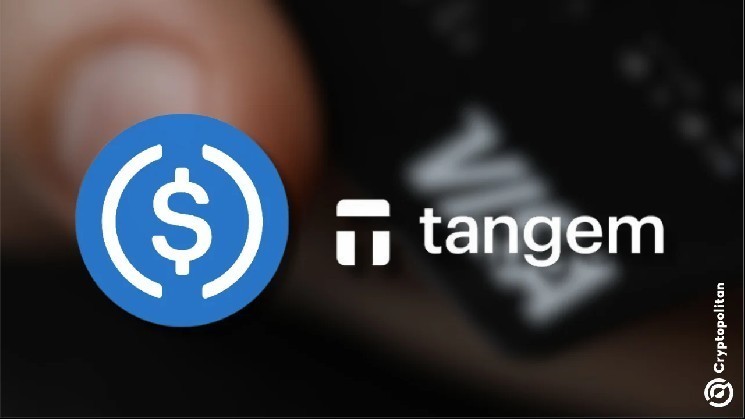Cryptocurrency wallet company Tangem has introduced Tangem Pay, a virtual Visa card that connects directly to hardware wallets, allowing users to spend stablecoins at millions of merchants around the world.
The paycard, co-founded with US payments infrastructure company Paera, allows users to deposit and spend Circle’s USDC stablecoin on the Polygon network, the company said in an announcement on Wednesday.
“Once a user deposits money into their Tangem Pay account, they can spend it anywhere Visa is accepted, regardless of the local currency,” said Tangem Pay CEO Marcos Nunez, noting that the solution supports Apple Pay and Google Pay for instant Visa payments.
42 countries plan to roll out Tangem Pay cards at scale
The Tangem Pay card will begin issuing in late November in key markets in the US, Latin America and Asia Pacific, with a planned launch in Europe in 2026.
The initial rollout will cover 42 countries including Australia, Brazil, Japan, Hong Kong, Singapore, and the United States.
“The virtual card is just the beginning. We are already working on expanding into new countries and providing incentives to make this card the go-to card for users’ daily spending,” Nunes said.
Tangem describes the pay card as a central component of a broader vision for a comprehensive self-custodial crypto ecosystem that includes storage, growth, and spending. Unlike custodial wallets, self-custodial options have the added benefit of providing users with direct ownership of their cryptocurrencies without the need to comply with KYC obligations.
Crypto cards centered around the Tangem hardware wallet function as cold wallets, following “be your own bank” guidelines. However, Tangem Pay accounts are still regulated by KYC regulations. Tangem itself has no access to user data and KYC is only required for pay card balances. If a user is blacklisted or involved in criminal activity, partner regulators monitoring compliance may disconnect the card from the payment network without compromising the hardware wallet.
Rain manages compliance and payments for Tangem Pay, a stablecoin payments infrastructure provider. Rain recently revealed plans to integrate with Western Union’s upcoming stablecoin-based payment system. Officially announced in late October, Western Union’s Solana-based digital asset network will feature the company’s proprietary stablecoin and is expected to launch in the first half of 2026.
Global stablecoin oversight guides Tangem Pay functionality
Pay card functionality is subject to ongoing global regulatory developments. Digital tokens pegged to fiat currencies, commonly referred to as stablecoins, have attracted the attention of regulators due to concerns about potential risks to financial stability, consumer protection, and anti-money laundering (AML) compliance.
In the United States, the GENIUS Act of 2025 established a federal definition of “payment stablecoin.” The law also requires issuers to maintain full backing of liquid assets, publish monthly disclosures, and prohibit misleading marketing that suggests government support. Additionally, it helps solve the problem that federally regulated stablecoins are neither securities nor bank deposits, providing legal predictability for both issuers and users.
Regulators worldwide are paying attention. (e.g. the EU’s MiCA framework, the UK’s plans for a specific regulatory regime for stablecoins, and guidance from international bodies such as the FSB and FATF) focus on transparency, operational resilience and cross-border coordination. This is particularly important for Tangem Pay, which operates in 42 markets with extensive regulations governing reserve requirements, consumer protection, and AML compliance.


